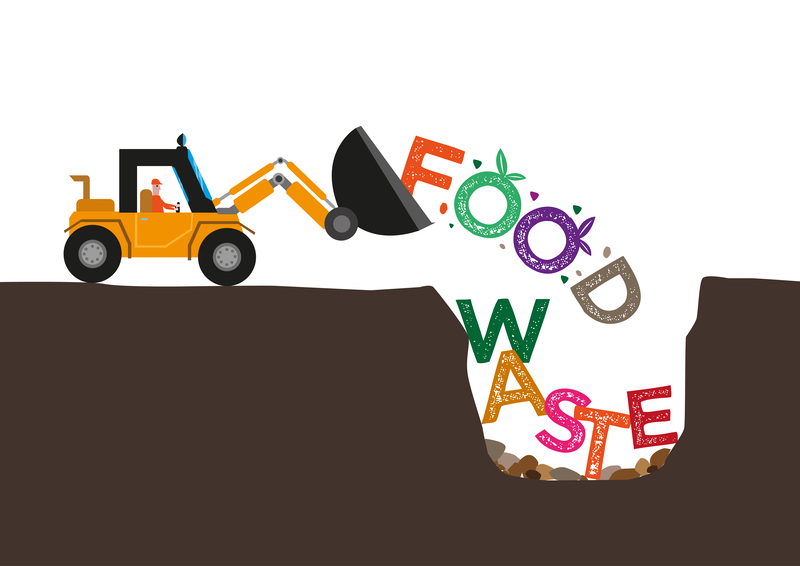Top Plastics to Reconsider in Your Daily Usage
In our modern world, plastic is an omnipresent part of daily life, from packaging and clothing to kitchenware and electronics. However, increasing environmental awareness and revelations about health concerns have prompted many to rethink the plastics they use. This comprehensive guide delves into the top plastics you should reconsider in your everyday routine, their impact, and the best sustainable alternatives.

Why Should We Reconsider Our Plastic Use?
Plastics have revolutionized convenience, but their drawbacks are significant. They persist in the environment for hundreds of years, leaching toxic substances and contributing heavily to pollution. Many plastics also pose potential health risks, especially when used with food or drinks. As a result, reducing plastic use is a top priority for individuals seeking a healthier lifestyle and a cleaner planet.
Key Reasons to Reduce Plastics:
- Environmental Pollution: Plastics constitute a major portion of landfill and ocean waste.
- Health Hazards: Certain plastics can leach endocrine-disrupting chemicals into food and drinks.
- Wildlife Harm: Animals ingest or become entangled in plastic waste.
- Resource Depletion: Plastics are derived mainly from finite fossil fuels.
Understanding Common Plastics and Their Concerns
Modern products are marked with resin identification codes (usually a number in a triangle) that indicate the type of plastic used. Not all plastics are created equal, and some pose greater risks than others. The following are the main types of plastics to reconsider using daily:
1. Polyethylene Terephthalate (PET or PETE) - Recycling Code #1
PET is widely used for single-use water bottles, soft drink bottles, and food packaging. While it is recyclable, its safety for repeated use is questionable due to potential leaching, especially when exposed to heat or sunlight.
- Where you see it: Disposable water bottles, soda bottles, salad dressing containers, some food trays.
- Concerns: Can leach antimony (a potential carcinogen) and phthalates under certain conditions. Designed for single use only, yet often reused at home.
- Recommendation: Avoid repeated use and minimize exposure to heat. Consider switching to stainless steel or glass bottles.
2. High-Density Polyethylene (HDPE) - Recycling Code #2
HDPE is considered one of the safer plastics and is frequently used for milk jugs, detergent bottles, and some grocery bags. However, increasing concerns about microplastic pollution and single-use culture mean even its use should be moderated.
- Where you see it: Milk, juice, detergent bottles, yogurt tubs, toys, thin plastic bags.
- Concerns: While generally low in toxicity, it contributes significantly to plastic pollution and is rarely reused.
- Recommendation: Choose reusable containers made from longer-lasting materials for food storage.
3. Polyvinyl Chloride (PVC) - Recycling Code #3
PVC, also known as vinyl, is notorious for containing plasticizers like phthalates and sometimes BPA, which have been linked to hormone disruption. Many experts recommend minimizing contact with PVC plastics, especially in food packaging and children's toys.
- Where you see it: Cling wrap, clear food packaging, toys, plumbing pipes, shower curtains.
- Concerns: Can leach hazardous chemicals. Production and incineration release dioxins--some of the most toxic chemicals known. Difficult to recycle.
- Recommendation: Look for "PVC-free" labels, and favor alternatives like glass or silicone for food storage or children's items.
4. Low-Density Polyethylene (LDPE) - Recycling Code #4
LDPE is found in retail bags, sandwich wraps, and some squeeze bottles. While deemed relatively safe for food contact, its single-use nature and poverty of recycling options have made it a target for plastic reduction advocates.
- Where you see it: Grocery bags, bread bags, shrink wraps, some food wraps.
- Concerns: Difficult to recycle, promotes disposable habits, can break down into microplastics.
- Recommendation: Bring reusable bags when shopping and opt for beeswax wraps or glass containers for food storage.
5. Polypropylene (PP) - Recycling Code #5
PP is widespread in yogurt containers, straws, bottle caps, and medicine bottles. While heat-resistant and popular for food containers, it still contributes to single-use pollution and is not always accepted by recycling programs.
- Where you see it: Yogurt cups, takeout containers, straws, disposable diapers.
- Concerns: Not widely recycled, can degrade into microplastics, and single-use products pile up in landfills.
- Recommendation: Use stainless steel or bamboo alternatives for straws and utensils. Choose bulk foods to avoid unnecessary packaging.
6. Polystyrene (Styrofoam) - Recycling Code #6
Polystyrene, especially in its expanded foam (Styrofoam) form, is highly problematic. It is often used for disposable coffee cups, food trays, and takeout containers. Health experts warn it can leach styrene, a possible carcinogen, particularly with hot or oily foods.
- Where you see it: Disposable coffee cups, takeout containers, plates, egg cartons, packing peanuts.
- Concerns: Poorly recyclable, easily breaks into pieces that harm wildlife, leaching potential of styrene.
- Recommendation: Bring your own reusable mug and food container when purchasing takeout. Seek compostable or biodegradable packaging options.
7. Other Plastics (Recycling Code #7, Including Polycarbonate and Bioplastics)
The "7 - Other" category includes various plastics like polycarbonate, which often contains BPA (Bisphenol-A). BPA disrupts hormone function and has been phased out in many products, but some alternatives may also be questionable. This category also holds certain biodegradable plastics--but not all are created equal.
- Where you see it: Baby bottles (older), water cooler jugs, CDs, eyeglasses, medical storage units.
- Concerns: Potential to leach BPA or related compounds, may not be biodegradable unless conditions are right.
- Recommendation: Verify "BPA-free" claims. Choose glass or stainless steel for baby and drinking products.
How to Recognize Problematic Plastics in Everyday Life
Examining packaging symbols is the most reliable way to identify plastics. The number inside the recycling symbol (triangle of arrows) corresponds to the type of resin used:
- 1: PET or PETE
- 2: HDPE
- 3: PVC
- 4: LDPE
- 5: PP
- 6: PS (Polystyrene)
- 7: Other (Polycarbonate, bioplastics, etc.)
Check the bottom or side of containers for these codes and reconsider products that fall within categories known for associated risks (especially #3, #6, and some #7s).
Better Alternatives to Plastic for Everyday Use
Reducing your reliance on harmful plastics is easier than it might seem. Many superior alternatives exist that are safer, more durable, and eco-friendly. Here's how you can proactively replace common plastics:
Best Non-Plastic Choices
- Glass: Excellent for storage, non-leaching, inert, and infinitely recyclable.
- Stainless Steel: Durable, lightweight options for water bottles, food containers, and straws.
- Silicone: Safe for use in the microwave and freezer, flexible, and reusable.
- Bamboo/Wood: Compostable choices for utensils, toothbrushes, and servingware.
- Cloth Bags: Great for groceries and produce, long-lasting and washable.
- Beeswax wraps: Eco-friendly and reusable alternative to plastic wrap.
Tips to Minimize Plastic in Daily Life
- Bring your own bag, cup, and straw.
- Avoid single-use products, especially phasing out #3, #6, and #7 plastics.
- Choose bulk and fresh produce rather than pre-packaged goods.
- Purchase food storage in glass or stainless steel.
- Select toys and baby products labeled "BPA-free" and "PVC-free".
- Support companies that use eco-friendly packaging and materials.
Positive Impact of Reducing Harmful Plastics
Reconsidering your daily plastic usage delivers substantial benefits for both personal health and the planet:
- Less landfill waste and ocean pollution.
- Healthier living by avoiding chemicals like BPA, phthalates, and styrene.
- Lower demand for fossil fuels and resources.
- Reduced exposure to microplastics.
- Being a positive role model for friends, family, and community.
The Role of Legislation & Innovation
Countries and municipalities worldwide are banning or restricting problematic plastics (such as single-use bags and polystyrene foam). Meanwhile, innovation continues in the area of biodegradable and compostable plastics and recycled content packaging. Supporting these policies and products helps accelerate the shift away from traditional plastics.

FAQ: Top Questions about Rethinking Plastic Use
Is it really necessary to avoid all plastics?
Not all plastics are equally hazardous. Some, like HDPE and PP, are commonly regarded as "safer" for food and beverage storage but still contribute to pollution. The key is to minimize use of the riskiest types and favor reusable alternatives whenever possible.
How can I shop with less plastic?
- Carry cloth or mesh produce bags and grocery totes.
- Opt for products packaged in glass, paper, or metal.
- Buy from local farmers' markets where goods are less likely to be over-packaged.
What about plastics labeled 'BPA-free'?
While "BPA-free" plastics are now common, some replacements for BPA may not be thoroughly tested and could present similar risks. For items like baby bottles and water jugs, consider non-plastic materials as the best choice.
Are biodegradable or compostable plastics a safe alternative?
*Bioplastics* hold promise, but many require industrial composting conditions to break down. They shouldn't be considered a universal solution, but they are often a step in the right direction when paired with proper disposal infrastructure.
Conclusion: Your Action Makes a Difference
Rethinking your plastic consumption starts with awareness. By recognizing the top plastics to reconsider in your daily usage--especially PVC, polystyrene, old polycarbonate, and single-use PET--you empower yourself to make safer, healthier, and more sustainable choices. Each action, no matter how small, is a step toward a cleaner planet and a healthier you. Start with one swap at a time, and soon your home can be a model for responsible living and environmental stewardship.
Ready to take the next step? Share this guide with your friends and family, and explore local initiatives supporting plastic-free lifestyles. Every effort counts!